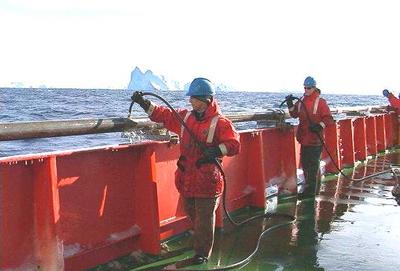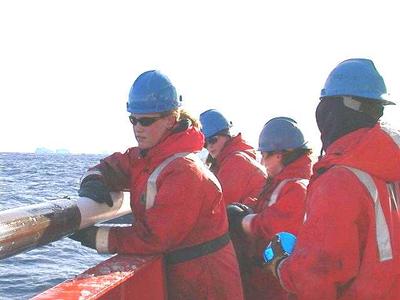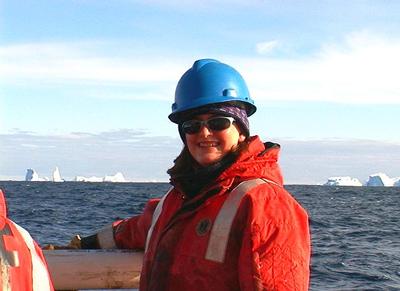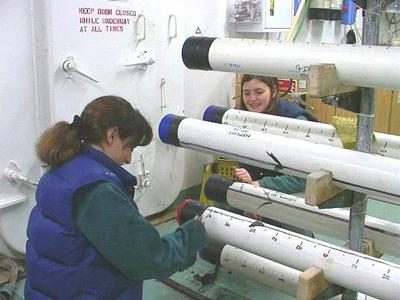
|
|
16 March, 2001
The last JPC (jumbo piston core) March 16
-066 55 lat / 063 07 long
Kate and Caroline are two students on the day shift, opposite to mine. I
have noticed there is a lack of pictures portraying their hard and dedicated
work assisting the scientist's and making the science on board this ship
happen. I have been so impressed with all the students on board. Their
hours of dedicated work is an inspiration to the quality of scientist that I
can only imagine they will become. In their honor, I would like to dedicate
the last JPC (jumbo piston core) we pulled to them, and to describe in their
words the events present and future.
Excitement builds in the lab when a JPC is on its way up. We start to
anticipate how many of the barrels will be filled with mud this time. As
the JPC nears the surface of the water, five or six of us start to get
dressed to go outside. We are each required to wear a hard hat, steel-toed
boots, a float coat, and warm clothing. The cores are very heavy and there
are lots of high tension wires above us so we wear a hard hat to protect our
heads and steel-toed boots to protect our feet. The float coat acts as a
life preserver incase we fall into the water.
As soon as the JPC is on deck and secured, we head out to begin
extruding the cores. An important job is to walk up and down along the
entire length of the JPC with a warm water hose. This is to prevent the
liners inside from freezing to the metal barrels. Marine techs are in
charge of pushing the cores out of the metal barrel by using hydraulics.
Once the first core starts to come out we put caps on the ends to keep the
mud inside the PVC pipe. We also make sure the caps and pipes are well
labeled so we know exactly where the mud came from. Then we carry the core
inside, where it is cleaned up. We then head back outside to repeat the
process for the remaining sections, hopefully there will be seven more pipes
full of mud! The cores will stay on the ship until Punta Arenas, Chile, and
then they are sent to Florida State University in Tallahassee, where they
will be sampled and stored.
- Kate McMullen, Hamilton College (Clinton, NY)
- Caroline Olson, Colgate University (Hamilton, NY)




Contact the TEA in the field at
.
If you cannot connect through your browser, copy the
TEA's e-mail address in the "To:" line of
your favorite e-mail package.
|
